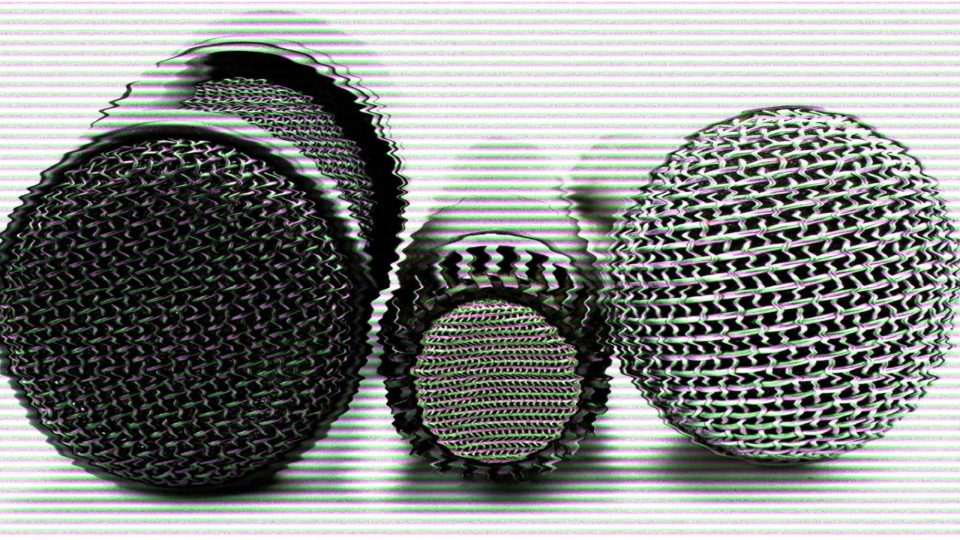What Are The Different Types of Microphones and How Do They Work?
Types of Microphones and Their Uses
Navigating through the music technology world for music production education is tough. Your journey becomes harder when searching for the best microphone for recording your samples for Mixxed. Are you recording drums? Vocals?
It’s important to understand the different microphones, what they do and how they work. Don’t worry, we’re here to help you do all that.
What Microphone Should I Use for Recording?
You won’t find the best microphone for podcasts or the best microphone for gaming in this article. These microphones are usually externally powered by USB connectors and won’t convert the input into as good a signal quality you will need. I’m sorry, podcasters and gamers.
However, you will find the best microphones with XLR connectors, which are the microphones that you want to focus on in your recording studio.
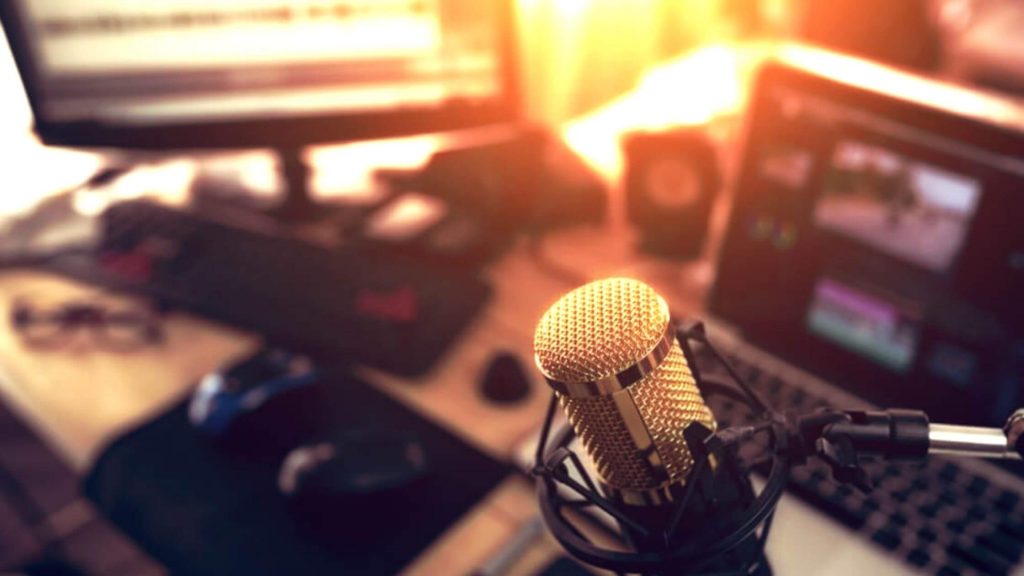
What is a Transducer and What Does it Do?
Before we get into the main course, let’s start with transducers.
Transducers are any object that converts one form of energy (an input such as Adele singing) into an electrical signal.
Outputs sent from transducers are always electrical signals that are proportional to the input energy applied to it.
The two common transducers are active and passive transducers. Active devices do not need an external power source, whereas passive ones do.
Dynamic microphones are active transducers, but condenser microphones are passive transducers… more on that now!
What Are the Four Types of Microphones for Recording?
Dynamic Microphones [ACTIVE] are the most durable microphones around in the Wild West.
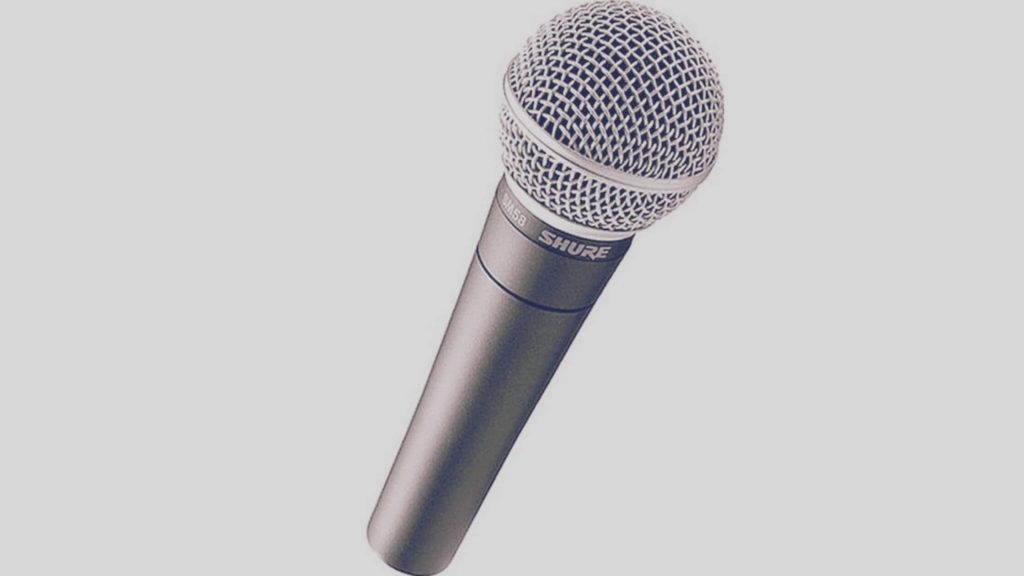
Dynamic mics work by using using a movable induction coil that surrounds a magnet and is also connected to a diaphragm. The diaphragm vibrates when there are incoming sound waves. The coil then moves back and forth past the magnet and creates a current and generating the electrical audio signal.
Due to this, dynamic microphones respond to variations in frequency and deal with high sound pressure levels (SPL) very well. This allows them to record loud sound sources like guitar and bass cabinets, as well as close mic ups to drum kits.
If you want a reliable dynamic microphone, we recommend the Shure SM57. The SM57 is the most common choice for professional studio engineers, and its performance – for the price that it is – is off the charts!
Large Diaphram Condensor Microphones [PASSIVE] are the most common studio recording microphones. Ever watched a movie with a sound booth in it? These are the microphones that you’d have seen.
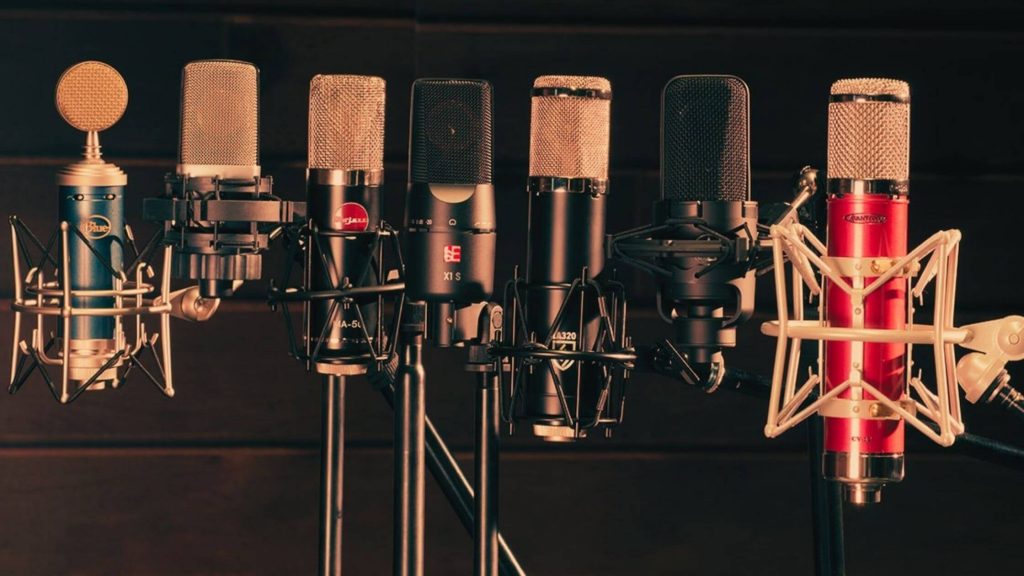
Condensers use a capacitor (condenser) that converts sound waves into electrical current. Sound waves vibrate a diaphragm, which is normally a gold-sputtered mylar (polyester film), that’s stretched in front of a metal plate, which we call the backplate.
As the diaphragm vibrates, the distance between the diaphragm and the backplate changes, which changes the capacitance. This converts the acoustic signal into an electrical one.
Condenser mics need 48V phantom power because the electrical signal needs to be amplified before it can leave the mic!
READ MORE: Top 5 Audio Interfaces for Beginners
Condensers are much more sensitive than dynamic microphones, but output a much louder signal with phantom power. This makes them perfect for recording quiet sources, or sources where you want as much detail as possible like vocals.
Large diaphragm condensers lushly capture natural sounds. They allow for detailed recordings of vocals and instruments like acoustic guitars that sound vibrant. They’re almost the whole reason why vocals in studio tracks sound so professional (the other reasons being the vocalist and engineer, of course).
LDC’s are an all-around kind of mic. If you’re looking to record in your bedroom studio, we recommend the Rode NT1-A for its multiple source capability and sound isolation.
Small Diaphram Condensor Microphones [PASSIVE], or pencil condensers, are the underdog on the playground.
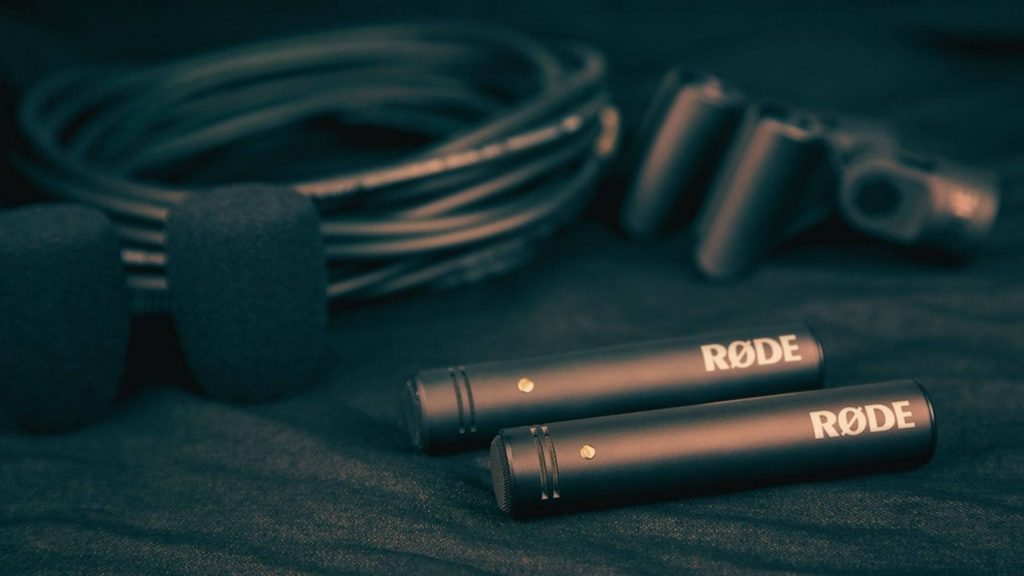
With a transient response to rival dynamic mics, an extended top-end response, and consistent pickup patterns.
This makes SDC’s ultra-functional for stereo recording. If you were to go to a classical music performance, you’d see these bad boys scattered around the stage in strategic places to capture the full sound image of the performance. Often in pairs for stereo recording, they’re effective for creating accurate stereo images of acoustic spaces.
Looking to record some hi-hats on your drum kit? We recommend the Rode M5‘s.
Ribbon Microphones [ACTIVE] were one of the earliest microphones on the scene. Ribbon mics date back to the 1920s, so they’re somewhat of the grandfather of microphones. Ever heard a very old broadcast recording? Chances are a ribbon mic recorded it.
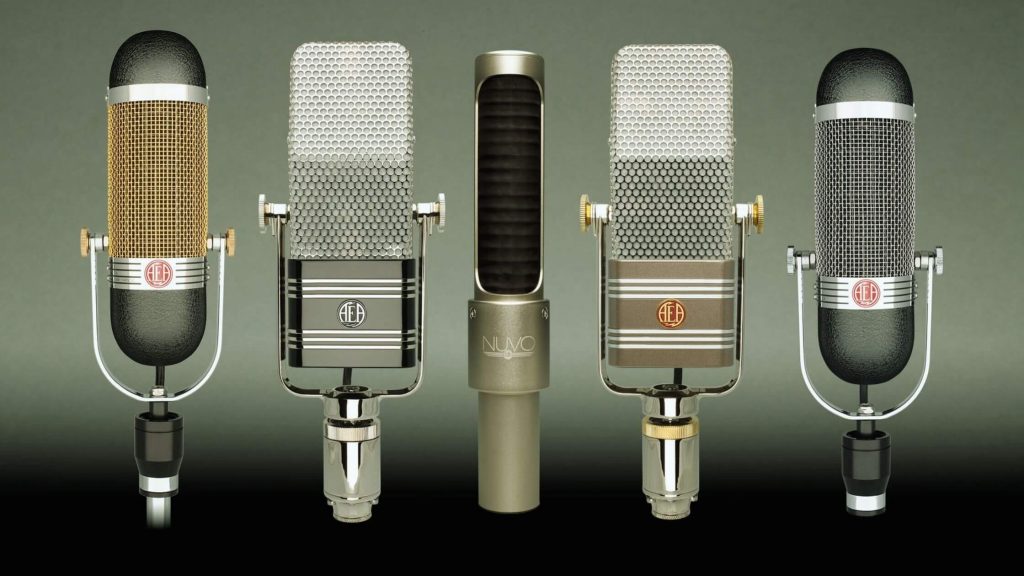
Ribbon mics use a very thin ribbon of conductive material suspended between the poles of a magnet to convert acoustic sound into a signal.
The earliest ribbon microphones were very fragile. If there were too high SPL’s or if handled wrong, they could very well break. However, Ribbon mics have an iconically warm tone, so you could argue the trade-off between durability and quality was worth it. But don’t think today’s Ribbon mics are unbreakable. They are still fragile, but a bit more durable than they used to be. Nice!
One more tip we could give you is to avoid injecting 48V phantom power into Ribbon mics. You will burn out the ribbon coil inside the microphone and leave the mic unusable!
Ribbon microphones use a perfect figure-eight polar pattern and produce a natural sound, and respond to EQ adjustments beautifully.
So, Which Microphone is Right For You?
Well, only you can answer that. We’ve given you the fundamentals of how each of the four studio microphones works, and what they’re used for.
Are you recording a guitar amp? Cool, look into a dynamic microphone. Want to capture the stereo image of your drum hats? Grab a couple of small-diaphragm condensers!
Stay tuned for our upcoming article about polar pickup patterns!
READ MORE: How to Choose an Affordable Audio Interface
